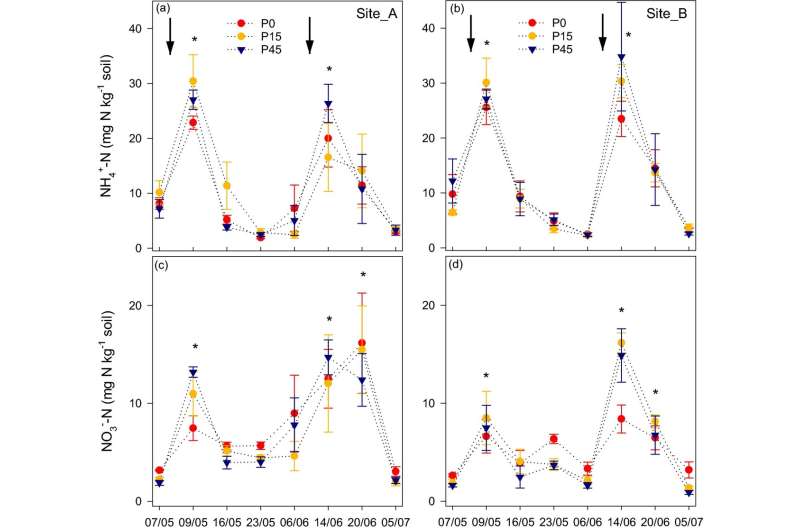Optimal soil phosphorus reduces fertilizer-derived nitrous oxide emissions

A new scientific paper from Teagasc has shown that getting soil phosphorus (P) levels right through a fertilizer program can significantly reduce emissions of nitrous oxide (N2O), a potent greenhouse gas. The paper from researchers at the Teagasc Environment, Soils and Land-Use Department in Johnstown Castle, County Wexford has just been published in the scientific journal, Scientific Reports. It concludes that increasing soil phosphorus to the recommended level for grass productivity reduces fertilizer derived N2O emissions in intensively managed temperate grasslands.
Head of the Teagasc Environment Research Department, Dr. Karl Richards said; "The paper shows that there are reduced N2O emissions from fertilizer applied to soils where they have the recommended agronomic optimum soil phosphorus levels. Farmers who improve soil fertility for agronomic benefits, can also reduce N2O emissions. This represents a win-win for the farmer and the environment."
Optimal soil phosphorus is important for grass growth and also influences the soil microbiome. Senior Research Officer and Enterprise Leader at Teagasc Johnstown Castle, Dr. David Wall stated that "Using an existing intensive grassland phosphorus fertilizer trial established in 1995, this research could investigate the effect of long-term phosphorus management on N2O emissions. This research is further evidence that maintaining long-term soil fertility will help to deliver on the sustainability objectives for the sector."
Amanuel Gebremichael, postdoctoral researcher with Teagasc, outlined the main findings: "We found that a long-term increase in soil phosphorus from fertilizer significantly decreased N2O emissions from field plots. In addition, keeping the soil P at the optimum level has the potential to further reduce N2O emissions due to higher grass N uptake through increased yields. This means that the application of good farming practices has considerable N2O mitigation potential in temperate grasslands."
The results showed that applying 45 kilograms of P per hectare per year increased soil test phosphorus from index 1 to index 3 and significantly reduced N2O emissions by 42%. The study highlights that achieving agronomic soil fertility targets can reduce greenhouse gas emissions and maintain agricultural production.
More information: Amanuel W. Gebremichael et al, Effect of contrasting phosphorus levels on nitrous oxide and carbon dioxide emissions from temperate grassland soils, Scientific Reports (2022). DOI: 10.1038/s41598-022-06661-2
Journal information: Scientific Reports
Provided by Teagasc





















